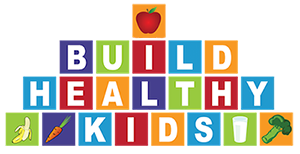| |

Exercise
101
 Daily Exercise Guide
Daily Exercise Guide
Getting
Started Activities
Tips
to be Fit
Exercise
Planner
|
|
Daily
Exercise Guide

Toddlers should
accumulate at least 30 minutes daily of structured physical
activity (organized by an adult) and at least 60 minutes and
up to several hours per day of unstructured physical activity
(free play).
 Preschoolers
should engage in 60 minutes of structured physical activity
(organized by an adult) and at least 60 minutes and up to
several hours of daily, unstructured physical activity (free
play). Preschoolers
should engage in 60 minutes of structured physical activity
(organized by an adult) and at least 60 minutes and up to
several hours of daily, unstructured physical activity (free
play).
For more detailed information go to:
Raising
a Fit Preschooler by the Nemours Foundation
Children and adolescents
ages 6-17 should get 60 minutes or more of physical activity
a day. This activity should be of moderate or vigorous intensity
(vigorous for at least 3 of days per week). In addition, on
at least 3 days, the activity should include muscle and bone
strengthening.
| Moderate–intensity
aerobic |
• Active recreation, such as
hiking, skateboarding, rollerblading
• Bicycle
riding
• Brisk walking |
| Vigorous–intensity aerobic |
• Active games involving running
and chasing, such as tag
• Bicycle riding
• Jumping rope
• Martial arts, such as
karate
• Running
• Sports such as
soccer, ice or field hockey, basketball, swimming, tennis
• Cross-country skiing• Active games
involving running and chasing, such as tag
•
Bicycle riding
• Jumping rope
•
Martial arts, such as karate
• Running
• Sports such as soccer, ice or field hockey, basketball,
swimming, tennis
• Cross-country skiing |
| Muscle-strengthening |
• Games such as tug-of-war
• Modified push-ups (with knees on the floor)
• Resistance exercises using body weight or resistance
bands
• Rope or tree climbing
•
Sit-ups (curl-ups or crunches)
• Swinging on
playground equipment/bars |
| Bone-strengthening |
• Games such as hopscotch
• Hopping, skipping, jumping
• Jumping
rope
• Running
• Sports such as
gymnastics, basketball, volleyball, tennis |
| Source: DHHS
Physical Activity Guidelines for Americans Chapter 3 |

An Average Day:
If your child is lucky, he or she will have recess every day
during the school day and gym several times a week. If not,
you may want to work with your school to improve its physical
activity curriculum. The following is an example of what an
average day at school should look like to promote health.
Morning:
If your child lives close to school, you can have them walk
if it is safe or create a “walking school bus”
whereby you pair up with other neighborhood families and one
parent walks a group of children to school.
Afternoon:
After school lets out is the time that you want to focus on
encouraging your child to be active. They have been sitting
inside engaging in mental activities all day. If you let them
run and play for an hour after school, they will be better
able to focus on their homework because they will have used
up some of that pent-up energy. If your child has to remain
in a supervised situation after school, try to find one that
is based on a physical activity such as basketball, running,
dance, karate, etc.
| 8 am |
Wake up and get dressed |
| 8:30 |
Eat Breakfast |
| 8:45 |
Walk to school or take the bus |
| 9-12:00 |
Schoolwork |
| 12:00 |
Eat lunch |
| 12:30-1:00 |
Recess |
| 1:30-3:30 |
Schoolwork |
| 4:00-5:00 |
Play outside in an organized sport,
or engage in some type of inside activity like Wii Fit
|
| 5:00-6:00 |
Homework |
| 6:00 |
Dinner |
| 7:00 |
Family fun time: Go for a walk or bike
ride; throw a baseball. |
| 8:00pm or so |
Bedtime. |
Getting enough sleep is essential for short and long term
health as well as cognitive development in children. Don’t
rely on your child to say that he or she is ready for bed.
When children get over-tired they have a harder time getting
to sleep and tend to wake up more during the night. Set a
bedtime and a routine for a healthier and happier child.
Remember, sleep is essential for everyone; many adults are
sleep deprived and this can effect concentration, mood, health
and an increase in caloric intake. People tend to eat more
as a way to boost their energy that is low due to a lack of
sleep.

| Age |
Nighttime Sleep Requirement |
| 3-11 months |
9-12 hours plus additional naps |
| 1-3 years |
12-14 hours |
| 3-5 years |
11-13 hours |
| 5-12 years |
10-11 hours |
| Adolescents |
8 1⁄2 - 9 1⁄4 hours |
| Adults |
7-9 hours |
| Source: National Sleep Foundation |
The weekends are a great time to be active. Children learn
best and are more likely to adopt behaviors that they see
their parents and caregivers doing. Try and engage in at least
one family activity, such as a bike ride, hike, walk, or swim,
and encourage your child to play outside or take part in a
sport.
Screen Time
The amount of time that your child spends sitting around playing
video games on the computer or a hand-held device and watching
television affects their overall health. In fact, it has been
shown to contribute to obesity maybe even more than not exercising.
It is easy to rely on television or a computer game now and
again, when laundry needs to get done or you need to make
a quick call, but what ends up happening is that these brief
periods become longer and they add up to a point where many
kids spend three to fourhours zoned out in front of a computer
screen.
Health experts recommend that you limit the amount of screen
time to less than two hours per day for your child and that
includes TV, computer (not including homework), videogames,
and hand-held devices. The more time they are sedentary, the
less time they are exercising and the more they are eating.
It all goes hand in hand.
If you have little ones, toddlers and preschoolers, the experts
recommend that unless they are sleeping, 60 minutes is the
maximum amount of time to be sedentary during any one period.
Small children are always on the run and getting into everything,
which is why the TV has become a babysitter for many of us.
Try and baby- proof certain areas of your home where you can
keep an eye on them without turning on the television. Children
need to move, play and investigate to learn all about the
world around them.
It does take effort on your part but the rewards are well
worth it. Benefits include preventing obesity, decreasing
body fat, and limiting their exposure to inappropriate material
like violence and advertisements pushing junk food.

If you took the average amount of time children spend watching
TV, by the time they get to first grade they will have watched
an equivalent of three school years in television, with 40,000
advertisements a year - half of those for food. Of those for
food, 98% will be for unhealthy food.
By the time they reach 18, they will have watched 200,000
commercials. Imagine the impact of all that advertising and
what would happen if they saw an equal amount for healthyfoods
like fruits and vegetables!
 |
Dr.
Deb's Bottom Line
|
 |
|
|
 |
Tips
|
 |
|
|

